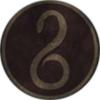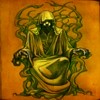... I have decided to give the full info on what each place in Middle-earth represents ... We already know that Arda is "our planet in a fictional time" ~(Tolkien himself)
You simply cannot conclude that way:
SHORT VERSION:
Tolkiens world was 'mythological', not 'historical'
Tolkien's world does not just 'represent' our historical world, it is unique in its own right. You can't just project our world back on Middle-earth in a general way. The only thing you can do is to take some vague inspiration from our world, but only as far as Tolkien himself did that. One example is the Gondorian culture, which was inspired in a very limited sense from the old Egypt (helmets of the Tower Guards and Rath Dinen), but Gondor did definitely not 'represent' Old Egypt. Etc. ...
LONG VERSION:
Middle-earth does not
represent any geographical (or cultural/ethnical etc.) entity in the known 'historical' world of ours ... although Tolkien has explicit stated, that his narratives concerning Middle-earth does not take place on another planet, but on our Earth in a mythological past, it does so only in a very vague sense ... Tolkiens world was 'mythological', not 'historical'.
In some letters, dating from the period of the first publishing of Lord of the Rings, Tolkien estimated the end of the Third Age to about 6,000 years before our time. However, he was later to reject this notion, making some fundamental changes to his cosmology ... in those late (and extensive) writings
Arda was no longer seen as our planet, but rather as the 'solar system' ...
Aman (or
Valinor aka 'The Blessed Realm) being like on another planet, and Sun and Moon being celestial bodies in their own right.
In relation to above maps, this concept would of course effectively remove the whole western hemisphere from the maps, at least as far as they pretend to depict Tolkiens world from the beginning of the Third Age and onwards. Likewise any landforms shown south of the latitude of Umbar is basically pure speculation, as we don't have enough lore to make any substantial assumptions on those parts of the world.
Of the lands to the east of the well-known parts of Middle-earth, i.e the lands to the east of the Sea of Rhûn, the only entities that we can assume with a fair degree of certainty, is the location of the
Orocarni, the 'Red Mountains', the range running approximately north-south, and the location of
Utumno to the north of these [cf. various entries in the History of Middle-earth]
So, my conclusions are:
On Geography:
Tolkien's world is 'mythological', and don't 'represent' any 'historical' world.
(the exception to this is: you can make some assumptions on climate, depending on the latitude)
On Cultures and Peoples:
For the reason given above, you can't 'import' historical cultures or peoples into Tolkien's world.
(the exception: some linguistic issues has to a very limited degree parallels in 'historical' cultures and languages; the only known examples of 'representation' is the Common Speech of Northwestern Middle-earth (Sôval Pharë) being 'represented' by Modern English, and the languages of the Northmen and the Rohirrim being 'represented' by Old Norse and Old English respectively.)
On Topography:
There are not any really decent maps on Middle-earth, showing all the important places in their proper location.
Karen Wynn Fonstad has published a very comprehensive collection (210 pages) of maps in
The Atlas of Tolkien's Middle-earth, with (estimated) some two thousand references on different subjects like topography (maps - lots of them in different scale), travel routes, army movements (plus estimates on the sizes of these) in different battles, architecture, landforms, climate, vegetation, population and languages.
However, this atlas was completed before the publication of the last volumes of History of Middle-earth, and the info contained in this last (and very important) volumes would in her own words require a substantial revision of the maps related to the Ages preceding the Third, which she hasn't done yet (2nd edition of the Atlas).
Still, her maps are the best you'll find at the moment.
--------------------
Some quotes on what Tolkien actually has said concerning this subject:
In the Prologue to The Lord of the Rings, Tolkien writes: "Those days, the Third Age of Middle-earth, are now long past, and the shape of all lands has been changed ..."
'Middle-earth', by the way, is not a name of a never-land without relation to the world we live in ... it is just a use of Middel English midden-erde (or erthe), altered from Middel English Middangeard: the name for the inhabited lands of Men 'between the seas'. And though I have not attempted to relate the shape of the mountains and land-masses to what geologists may say or surmise about the nearer past, imaginatively this 'history is supposed to take place in a period of the actual Old World of this planet.
As for the shape of the world of the Third Age, I am afraid that was devised 'dramatically' rather than geologically, or paleontologically. I do sometimes wish that I had made some sort of agreement between the imaginations or theories of the geologists and my map a little more possible. But that would only have made more trouble with human history.
... all this is 'mythical' ... as far as I know it is merely an imaginative invention, to express, in the only way I can, some of my (dim) apprehensions of the world. All I can say is that, if it were 'histrory', it would be difficult to fit the lands and events (or 'cultures') into such evidence as we possess, archaeological or geological, concerning the nearer or remoter part of what is now called Europe; though the Shire, for instance, is expressly stated to have been in this region (I p. 12). I could have fitted things in with greater versimilitude, if the story had not become too far developed, before the question ever occured to me. I doubt if there would have been much gain; and I hope the, evidently long but undefined, gap* in time between the Fall of Barad-dûr and our days is sufficient for 'literary credibility', even for readers acquainted with what is known or surmised of 'pre-history'.
[in a note to this]
*I imagine the gab to be about 6000 years: that is we are now at the end of the Fifth Age, if the Ages were of about the same length as S.A. or T.A. But they have, I think, quickened; and I imagine we are actually at the end of the Sixth Age, or in the Seventh.
'Middle-earth' is an old world, not invented by me, as reference to a dictionary such as the Shorter Oxford will show. It meant the habitable lands of our world, set amid the surrounding Ocean. The action of the story takes place in the North-west of 'Middle-earth', equvivalent in latitude to the coastlands of Europe and the north shores of the Mediterranian. ... If Hobbiton and Rivendell are taken (as intended) to be about the latitude of Oxford, then Minas Tirith, 600 miles south, is about the latitude of Florence. The Mouth of Anduin and the ancient city of Pelargir are about the latitude of ancient Troy.
CONCLUSION:
Tolkien's Middle-earth is a mythological world, NOT our historical world. You can't superimpose our world on Middle-earth, i.e. expand Middle-earth with Peoples, Cultures and Realms that did not exist in Tolkien's own writings.



























